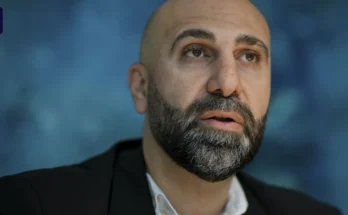The European Union finds itself faced with the great challenge of defending what, at the beginning, was the germ of its birth with the Schuman declaration of May 1950. On that occasion, the French Foreign Minister, Robert Schuman, gave a speech for history in which he proposed that the coal and steel produced by France and Germany be managed jointly, with the aim of promoting peace between two historically opposed countries that had been protagonists of humanity’s greatest war conflict, the Second World War. Now, the EU is trying to defend its battered steel industry from foreign steel, particularly China, which has plenty of cheaper and more polluting overproduction that it wants to get rid of, and against which the European steel industry cannot compete without tariff barriers.
The European Commission’s latest proposal consists of reducing duty-free import quotas by almost half (18.3 million tonnes) and doubling the tariff due when this threshold is exceeded, from 25% to 50%. The measure, celebrated by the steel industry association Eurofer, means putting an end to the temporary nature of the safeguard measure that the EU has put into practice to protect its steel industry. This is something the World Trade Organization (WTO) allows when there is a surge in imports of a product that causes serious damage to an industry, which could have happened if measures taken by Trump during his first presidential term in 2018 had not been responded to.
At the time, the tycoon increased duties on steel and aluminum imports to the United States, which caused much of that metal to be diverted to Europe. The EU responded with the safeguard measure, but this could be applied for a maximum of eight years, expiring in mid-2026. After the Commission’s proposal, the approval of the European Parliament and the Twenty-Seven is missing, even if for a large part of the sector the measure is insufficient.
“It leaves the door open to steel derivatives, which would put at risk the 12,000,000 European jobs in the entire associated value chain,” complains Fernando Espada, vice president of Eurometal, the European Federation of Steel and Metals Trade Associations. “The steel industry will be protected, but not its customers. Those who consume European steel must be protected”, adds the entrepreneur who is also general director of Tata Steel Layde. Among the derivatives Espada refers to there are, for example, car parts, photovoltaic panels or various machinery. According to a Eurometal report, between 2010 and 2024, imports of steel derivatives into Europe more than tripled, by up to 213%, reaching eight million tonnes. The automotive sector alone represents 40% of the total.
“These products, even if they contain a lot of steel inside them, do not enter Europe as steel, but as ‘manufactured goods’, and are therefore not covered by the same guarantees or trade defense instruments that concern raw or semi-finished steel (…) In short: the steel enters the same, but disguised as a finished product”, explains José Ignacio López Sánchez, professor of Business Organization at CEU San Pablo University.
The steel derivatives industry, such as automotive components, wants Europe to also close that back door through which Chinese steel continues to sneak. “We are competing with products that do not pay the same for their emissions, nor are subject to the same regulatory requirements as those we produce in Europe. This encourages industrial relocation and harms those of us who produce in Europe,” complains Teknia, a Spanish manufacturer of automotive components.
One of the reasons why the EU has not yet taken action against these types of products is the legal issue. “In the European Union, trade defense measures, such as those of anti-dumping or anti-subsidy, are applied on a product-by-product basis and require demonstration of clear harm to the domestic industry. This proof is particularly complex in the case of derivatives, where there is a great atomization of producers and a fragmented value chain that makes it difficult to demonstrate damage”, says Javier Montes Urdín, partner in charge of the Advanced Manufacturing sector of EY Spain.
Conflicting interests with the automobile
The balancing act that the EU must carry out in this matter is particularly complex, since greater protection of its steel also means harming its automotive industry, a sector that suffers from strong competition from China and which has publicly complained about the proposal launched by the Commission last month. “I would define it as a tension between two legitimate needs, but they push in opposite directions. The automotive sector, which competes globally, needs cheap materials and components to maintain its competitiveness. If you can buy a metal part at a much lower price outside Europe, you have a clear incentive to do so. On the other hand, the steel industry and part of the ancillary industry see how the added value they should generate is disappearing. They lose orders, margins and production capacity,” he says Lopez.
After learning of the Commission’s proposal, Eurofer also intervened, recalling that the level of use of European blast furnaces is around 65%, something unsustainable and which causes “layoffs and closures, while a third of European demand for steel is satisfied by low-cost imports with a high carbon content”. The final objective, this business association then indicated, is to allow the steelworks to return to operation with a sustainable utilization rate of between 80% and 85%.
The European Executive’s proposal also includes the study of a melting and dumping clause, similar to the US one, which would make it possible to trace the real origin of a material and prevent Chinese steel from being passed off as metal from another place. “We believe that Europe should move in that same direction to protect its industrial base and guarantee fair competition and common rules for all,” they ask Teknia.
Furthermore, López and Montes agree on the need to accelerate the implementation of the CBAM, the Carbon Border Adjustment Mechanism, which penalizes the CO2 emissions of some products manufactured outside the EU and from which derivatives are excluded. “And, above all, we must invest in the modernization of European steel, so that it is competitive and low-emitting. Europe can protect itself, but it must also strengthen itself,” says López.



